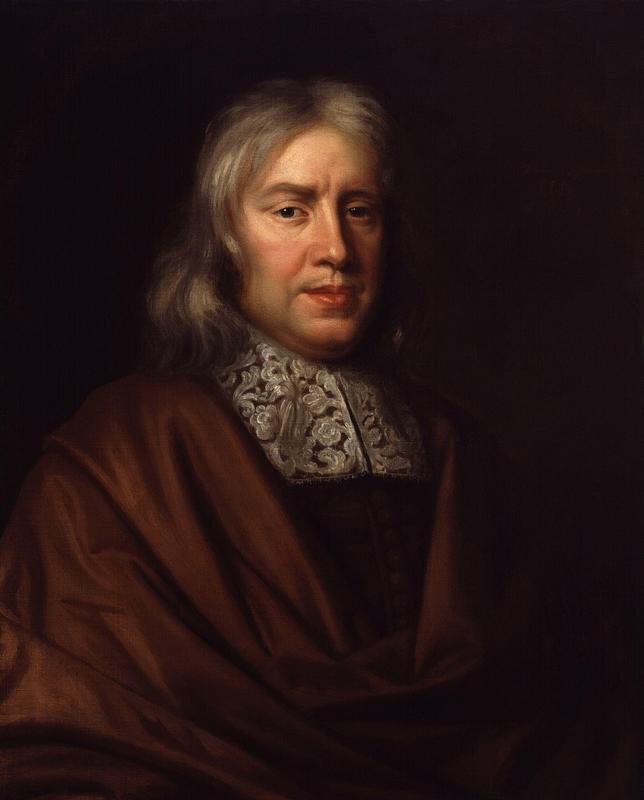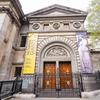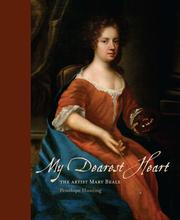More about Thomas Sydenham
- All
- Info
- Shop

Sr. Contributor
Thomas Sydenham is often called “The English Hippocrates” and “The Father of English Medicine” for his pioneering contributions to the medical field.
Sydenham was the first to identify his namesake disease of Sydenham’s Chorea, among many other accomplishments. Equally pioneering in her way was Mary Beale, only the second known and first objectively successful female artist to paint professionally in England.
Sydenham and Beale lived and practiced close together in fashionable Pall Mall; they were part of a coterie of creatives, intellectuals, and highly skilled tradespeople who frequently socialized and helped advance each other’s careers. This elite group was also notably egalitarian in terms of gender for the time, including Mary Beale and fellow female artists in training Kate Trioche and Sarah Curtis, as well as supportive male allies like Mary’s husband Charles, famed court painter Peter Lely, and Sydenham. It is therefore perhaps unsurprising that Beale painted this and another popular portrait of Sydenham, the latter gifted to the Royal College of Physicians by Sydenham’s son, and that both originals are the frequent subjects of engravings found in medical establishments like the Wellcome Library. Sydenham and Beale had much in common in addition to this mutually beneficial patronage. They were of a similar generation, both from puritan backgrounds, and both survived the rollercoaster of upheaval that was England in the 17th Century.
The English Civil Wars hit Sydenham’s family especially hard. It is said that “no other family…gave more distinguished service to the Parliamentary cause,” and thus they paid dearly for their support of Parliament over King Charles I. Sydenham's father was captured by Royalists, two of his brothers died in battle, and most traumatically, his mother was murdered by a Major Williams, likely during a retaliatory raid on their family manor. However, one of the Sydenham brothers later spotted the same Major Williams in the heat of battle, and (in true Inigo Montoya fashion) proclaimed, “I will now avenge my mother’s innocent blood,” before charging and slaying Williams, who fell under his horse’s feet. Thomas himself served with “the loss of much blood,” wounded on one occasion, left for dead in a field of corpses upon another. Once a soldier even burst into his room and attempted to shoot him directly through the chest, but in drunkenness the soldier shot his own hand instead.
When Charles I was beheaded and Oliver Cromwell seized power, the Sydenhams were handsomely rewarded for their sacrifices. The eldest brother became a governor, MP, and high-ranking cabinet minister in Cromwell’s government. Flush from a grant, Thomas wed Mary Gee, a girl from his home hamlet, and also harbored political ambitions. Not everybody fared as well as the Sydenhams under the new regime. While some laud Cromwell’s presiding over Britain’s first republic as an important feat for democracy, critics point to his theocratic authoritarian tendencies, and arguably genocidal policies against Irish Catholics.
The Restoration of King Charles II cut off Cromwell’s head (posthumously; his corpse was exhumed expressly for the purpose) and Sydenham’s path to political power, but motivated him to refocus on medicine. Meanwhile, the licentious reign of England’s “Merry Monarch” opened doors to professional women like Mary Beale. Charles even lifted the ban on women appearing on stage, probably owing more to his fondness for bedding pretty young actresses than to any protofeminist sympathies. But the bold new age brought catastrophe in the wake of merriment. Between 1665 and ‘66, the Great Plague ripped through London, killing nearly a quarter of the city’s population, while Sydenham retreated to the countryside. Subsequent commentators have sometimes derided the doctor for his decision to flee in a time of sickness, but defenders have pointed out that Sydenham was likely following the gentlefolk who were his primary patients rather than acting out of personal cowardice.
The year 1688, when Beale painted this portrait, marked the dawn of still more radical change. Charles II’s younger brother, the wildly unpopular Catholic absolutist King James II, was dethroned by his own daughter and son-in-law in the “Glorious Revolution.” The new royal couple, Mary and William of Orange, effectively ceded the divine right of kings to the more democratic authority of parliament, ushering in an era of relative stability after a century of wars between those oft-conflicting forces. Sadly, Sydenham would not live to enjoy the calm after many storms. He died just a year later in 1689.
Considering the unrelenting parade of crises that interrupted his schooling, one can understand why Sydenham appears to have had only 18 months of formal education in total, dispersed over the course of several years. He flaunted contempt for the educated medical establishment of the day, acerbically commenting that one might just as well send a man to Oxford to learn shoemaking as medicine. He did, however, witness the spectacle of a woman resurrected from the dead during his college years. When the body of a woman hanged for murder was delivered to his anatomy school for dissection, she was miraculously revived, thus escaping the hangman’s noose and the doctor’s scalpel.
In accord with his viewpoint on academia, Sydenham rejected the often pseudoscientific remedies that were fashionable among his contemporaries, and was more wont to proscribe beer, opium, and common sense. For example, perceiving that a complaining patient, in addition to his other ailments, was simply hungry, Sydehnam prescribed a chicken dinner and pint of wine. Similarly, he sent a hypochondriac on wild goose chase to Scotland in search of a fictitious doctor; the patient returned, furious that Sydenham had wasted his time, but cured of the alleged disease. Sydenham observed that "The arrival of a good clown exercises a more beneficial influence upon the health of a town than of twenty asses laden with drugs,” and that “the greater part of those who are supposed to have died of gout, have died of the medicine rather than the disease.” When a colleague asked him what texts to read in the study of medicine, Sydenham recommended Don Quixote, and quipped that in practicing medicine, often the best course was to do nothing. In an era when the old adage that the cure is worse than the disease was never more true, it was likely this very skepticism that was key to Sydenham becoming the most influential doctor of his time; the father of his craft, aptly painted by the mother of hers, Mary Beale.
Sydenham also had something in common with Edward Henry Charles James Fox-Strangways, 7th Earl of Ilchester, who gave this painting to the museum in 1953. Fox-Strangways shared Sydehnam’s fondness for good food and drink, and was a member of the Oxford Railway Club, a university group devoted to dining in formal wear on luxury trains. The club boasted many members from the “Bright Young Things,” a fashionable set of posh Brits distinguished for their artistic prowess, copious alcohol abuse, wild partying, Queer experimentation, or all of the above. Fox-Strangway’s fellow club members included author Evelyn Waugh, and Hugh Lygon, Waugh’s reputed gay lover and likely basis for the character of Sebastian Flyte in his novel Brideshead Reviseted. It is doubtful that Sydenham, the puritan-raised, happily married family man enjoyed quite such hedonistic delights. Nonetheless, his indulgence in rich food and strong drink contributed to his own suffering of gout, a disease he famously studied and which may have contributed to his death at age 65.
Sources
- Byrne, Paula. “Waugh and Brideshead.” Vanity Fair, March 15, 2010. https://www.vanityfair.com/culture/2010/04/waugh-excerpt-201004.
- Dewhurst, Kenneth. “Thomas Sydenham (1624-1689): Reformer of Clinical Medicine.” Medical History 6, no. 2, (April 1962): 102. https://www.chicagomanualofstyle.org/tools_citationguide/citation-guide….
- Gillam, Sarah. “Mary Beale, artist, and a portrait of Thomas Sydenham.” Royal College of Physicians, September 21, 2018. https://history.rcplondon.ac.uk/blog/mary-beale-artist-and-portrait-tho….
- Jacobson, Anne. “The ‘English Hippocrates’ and the disease of kings.” A Journal of Medical Humanities, (Fall, 2017). https://hekint.org/2017/10/11/thomas-sydenham/.
- Lancaster, Marie-Jaqueline. Brian Howard: Portrait of Failure. London: Timewell Press Limited, 2005.
- Larson, Frances. “Severance Package.” Harper’s Magazine, accessed March 16, 2022. https://harpers.org/archive/2014/08/severance-package/.
- Latham, Robert Gordon, and Thomas Sydenham. “The Works of Thomas Sydenham, MD.” The Sydenham Society, 1850.
- Marks, MD, Jay W. “Medical Definition of Sydenham, Thomas.” Reviewed June 3, 2021. https://www.medicinenet.com/sydenham_thomas/definition.htm.
- Miller, Lydia. “The Two Marys of St James’s Church, Piccadilly.” Philip Mould & Company, accessed January 15, 2022. https://philipmould.com/news/131-the-two-marys-of-st-jamess-church-picc….
- National Portrait Gallery. “Thomas Sydenham.” Accessed March 15, 2022. https://www.npg.org.uk/collections/search/portrait/mw06180/Thomas-Syden….
- “Sydenham, Thomas.” In YourDictionary. Accessed March 15, 2022. https://biography.yourdictionary.com/thomas-sydenham.
- “Sydenham, Thomas.” In Wikipedia. Accessed March 16, 2022. https://en.wikipedia.org/wiki/Thomas_Sydenham.
- Valley, Paul. “The Big Question: Was Cromwell a revolutionary hero or a genocidal war criminal.” The Independent, September 4, 2008. https://www.independent.co.uk/news/uk/this-britain/the-big-question-was….
- Wellcome Collection. Catalogue entries: for “Mary Beale, Thomas Sydenham.” Accessed March 15, 2022. https://wellcomecollection.org/works?query=mary+beale%2C+thomas+sydenham.












